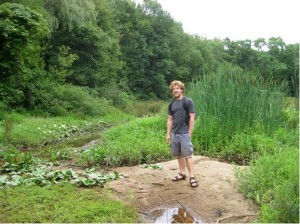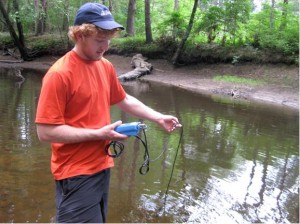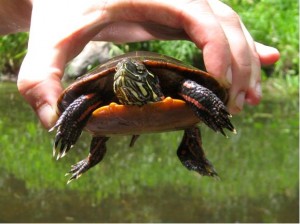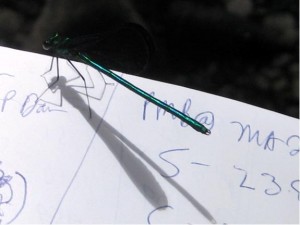The following is an update from Nik’11 who is working on an independent summer research project assessing the quality of herring habitat in MA in order to determine places where dam removal and restoration would be most beneficial for the herring.
Written by Nik:
There are two species of them: blueback herring (Alosa aestivalis) and the alewife (Alosa pseudoharengis).
Both are anadromous, which means that they live in the ocean but spend their youth in streams (for the blueback) and ponds (for the alewives). Every spring around April and May, millions of river herring swim up streams and rivers across the Atlantic Seaboard from Nova Scotia Florida. Each female will lay around 100,000 eggs, but most of the eggs and juveniles become food for other organisms. In fact, river herring are pretty much the Happy Meal equivalent for animals as diverse as striped bass, herons, snapping turtles, shad, seals, humans, and blue fish. The spawning run in spring and the fall migration of the juvenile herring to the sea is like one big all-you-can eat buffet.
That is, it was until river herring populations began a long decline back in the 18th century. Dams that block the herring’s upstream migration are one problem; another more recent one is bycatch by giant commercial trawlers for Atlantic herring that inadvertently sweep up hundreds of thousands of herring at once in their football field-sized nets. This decline led the Massachusetts Division of Marine Fisheries to announce a moratorium on the river herring fishery in 2005; state populations are just starting to recover.
For my project, I decided to focus on dams. If we could remove dams and restore herring runs, I thought to myself, there would be a bigger all-you-can-eat buffet, and more Happy Meals that would in turn lead to Happier bass, herons, turtles, seals, and even humans!!! etc. etc… You get the idea. And passage would not only be restored for river herring, but also brook trout, rainbow smelt, the American eel, American shad, the brook lamprey, and a number of other fish.
But before removing the dam, it helps to know whether or not the habitat upstream is good for the river herring. This can help get people interested in dam removal (“you know, it would be great to remove this dam because the habitat IS actually really good for the herring — here’s the data”) and also help the folks at the Division of Ecological Restoration and American Rivers (and other dam-removal-oriented groups with $) decide which dams to prioritize for removal. Plus, I can test my own hypotheses about how the dams are affecting the brook and river and pinpoint other problems (like streams running dry because of people using too much water — http://www.wickedlocal.com/hanover/topstories/x553801786/Hanover-Water-restrictions-in-effect).
So, after setting up my project (getting equipment, talking to the Division of Marine Fisheries, fine-tuning protocols, etc.) I have spent a little more than the past month monitoring 2 herring runs in-depth using the Division of Marine Fisheries’ protocol for river herring habitat assessment on the Satucket River and the Third Herring Brook (a stream that begins in my backyard). I collect data on five quantitative parameters — dissolved oxygen, pH, conductivity, salinity, and temperature — as well as several more qualitative observations like eutrophication, passage and passage impediments, and spawning substrate. So far both main spawning ponds look A-Ok for the juvenile herring, which is good since it’s been a hot July.
I am sincerely hoping that dam removal projects on both the Satucket and 3rd Herring Brook get kickstarted by my work! Knock on wood. More later.
Amy Briggs’10 (see Prairie posts) came out and helped!
Great Company makes for Great Times on the river!





